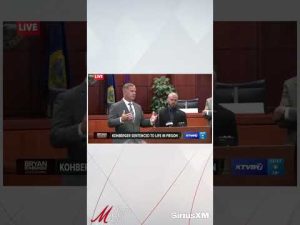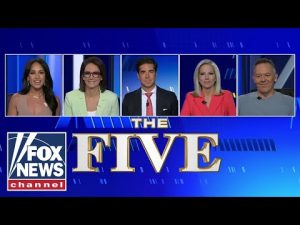President Trump recently made headlines with a visit to the Federal Reserve, where he met Chairman Jerome Powell at the central bank’s headquarters. The visit was somewhat of a spectacle, as it came with some sharp commentary about Powell’s management of renovation costs at the Fed’s headquarters. Trump made it clear that he was not one to shy away from calling out cost overruns, humorously channeling his reality TV persona by declaring, “You’re fired!” This saying, famous from his time on The Apprentice, highlights his no-nonsense attitude toward spending, especially in government projects.
The financial figures involved are eye-catching. The original renovation budget for the Fed climbed from $2.7 billion to $3.1 billion, raising eyebrows and questions about accountability. Trump used his background as a developer to draw a comparison, suggesting that any building manager who oversaw such budget increases would likely find themselves on the chopping block. With such a rise in costs, it seems the Fed is not only handling monetary policy but also a construction project that is far exceeding its original financial estimates.
The president’s visit coincided with a broader narrative about changes happening within left-leaning media and political circles. There has been a noticeable turnover, with several high-profile figures being shown the door, much like the renovation project at the Fed. This pattern may indicate that the public’s appetite for the typical fare of “lefty liars” is dwindling, leading to significant personnel changes at major news outlets. Trump, ever the provocateur, managed to make light of these shifts, suggesting that even favorite hosts of the left, like Jimmy Kimmel and the cast of The View, might be next in line to face the consequences of their liberal rants.
As Trump continues to criticize Powell’s decisions, he is hinting that the need for lower interest rates is vital for invigorating the American economy. The insistence from Powell to keep rates high is seen as a barrier against the robust growth Trump is promoting. The president argues that cutting rates would encourage home buying and reinvigorate the housing market, which is currently stagnant. But it seems the Fed chair is sticking to his guns. When it comes to inflation, Powell believes higher interest rates are still necessary to keep it at bay, despite Trump’s contention that inflation is already on the decline due to his administration’s actions.
Interestingly, the conversation around inflation and economic growth isn’t just about numbers; it touches on the bigger narratives in American society. The president’s comments about Powell underline a sense of frustration with authority figures who seem out of touch with everyday Americans. He’s not simply critiquing Powell’s fiscal policies; he’s also bringing attention to a larger ideological divide. Many seem ready to reject the “elitist” mentality that often accompanies big governmental decisions or economic strategies that overlook the common citizen. Trump’s supporters are convinced that as he champions economic reforms and accountability, people’s perspectives about who’s truly running the show are likely to shift right along with public sentiment.
In the end, President Trump’s visit to the Federal Reserve not only drew attention to fiscal responsibility but also underscored the mounting frustration individuals feel toward political and media elites. As he maneuvers through the political landscape, it remains clear that this is more than just a battle over budget figures; it is about reclaiming power and fostering a voice for those who feel sidelined by the political establishment. In a nation that’s already seen a historic shift in political dynamics, this encounter at the Fed might just be another step in the ongoing saga of accountability and transparency in government.







